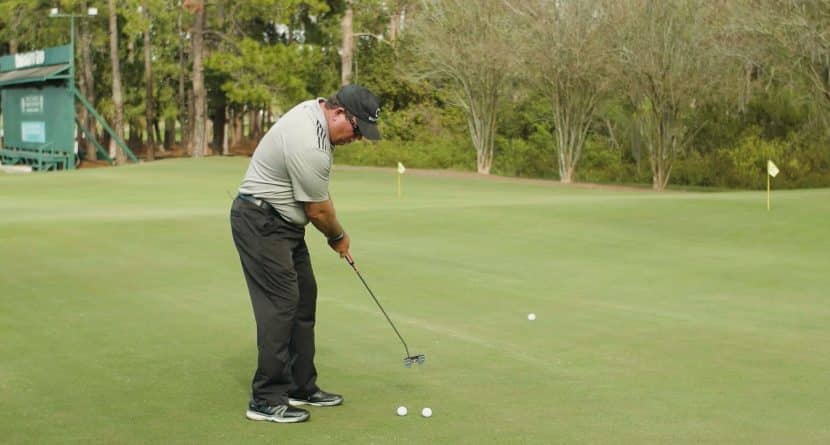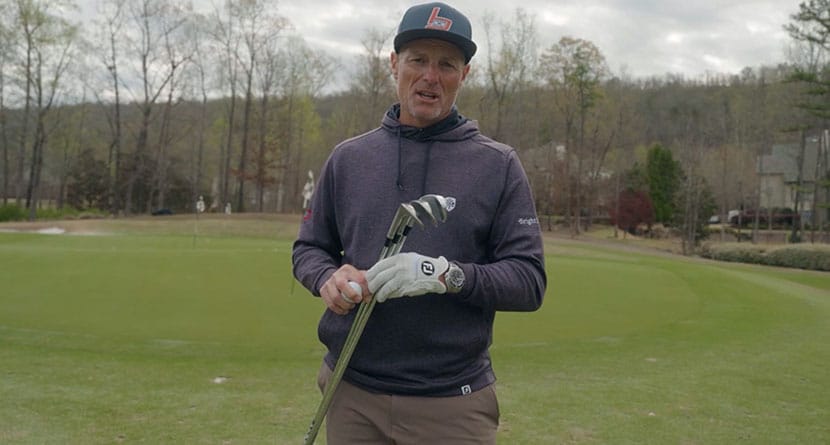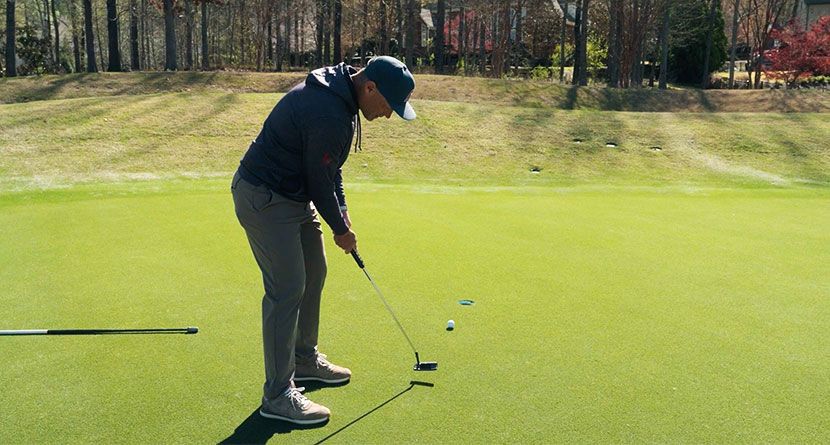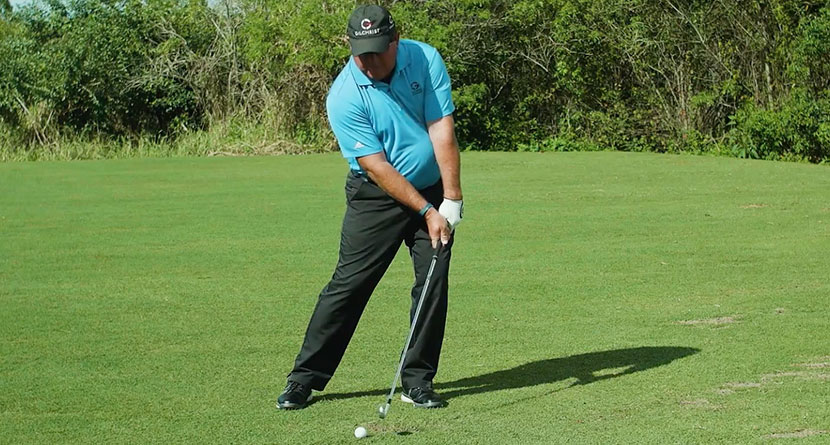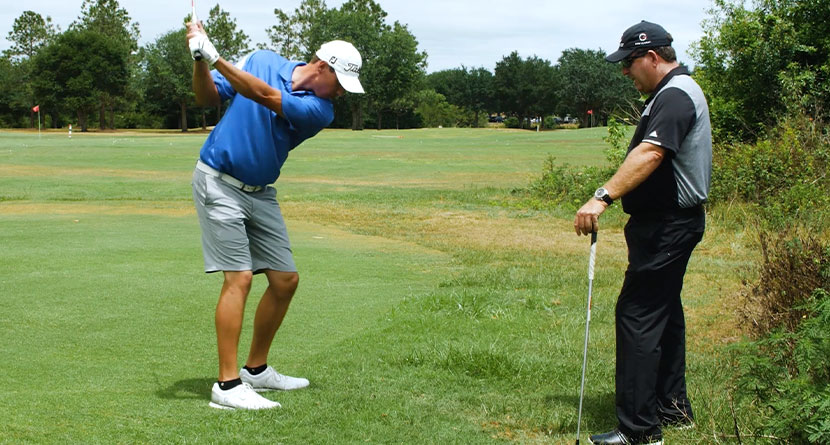Bubba Watson has improved every round of this week’s A Military Tribute at the Greenbrier thus far, and finds himself tied for sixth at 11-under par entering the final round. Shooting 66 in the second round required long, accurate tee shots, precise approach shots and holing some putts. However, a round like that also requires some momentum savers.
That is what we saw on the 3rd hole, a par-3. His tee shot on the short hole found the sand and ended up against the steep face of the bunker. The uphill position of the green complicated the shot and the amount of green between the ball and the flag meant he could not play a high soft and short shot. This shot needed to clear the steep face, have enough trajectory to land softly on the green, and not come out too hot with minimal green beyond the flag as well.
So how did he do it?
Bubba played a very aggressive flop shot, in the most simple terms. He did so in a way that allowed the sand to help him execute the shot. He set up very open, both with his body and club. He took a full backswing and swung aggressively into the sand about two inches behind the ball.
We normally don’t see full backswings on bunker shots requiring touch, but the length of the backswing is needed to deliver enough energy through impact since the desired low point of the swing meant he was hitting a few inches behind the ball — if he had made a half backswing and hits the same spot in the sand, the ball may not have cleared the lip.
The extremely open stance at address meant he could finish very sharply to his right side because he was swinging along the alignment he set at address. By not allowing the club to advance far past impact, Bubba was sure he wouldn’t contact the grass of the bunker face.
Finally, we see that the short follow through meant he was not going to play a long carrying shot — that’s just not possible with an abbreviated finish. Instead, contacting a little more sand meant the ball was going to release once on the green.
The shot was executed perfectly, rolling a few feet past the hole for a marketable par putt — a momentum saver from a difficult lie.
The next time you are close to a bunker lip and a traditional shot for you will be sure to hit some grass take the risk out of not getting the ball on the green or even injuring yourself by:
- Setting up very open, as if to play a flop shot
- Swing along the alignment of your body and exaggerate the finish around your body to clear the bunker face
- Adjust the amount of sand you take to make up for the lack of carry

